COVID-19 Lockdown: What is the way ahead for auto dealers?
Amidst the COVID-19 tragedy, the entire world economy is prepping itself for a dearth future. Difficult times are inevitable and like many industries, the world auto industry is also plummeting. According to reports, the auto industry faces both a supply side and a demand side pressure due to the spread of the coronavirus.
As a country that depends completely on imports, Nepal’s auto industry is also set to bear the brunt of the effects of COVID-19. And, the nationwide lockdown to prevent the spread of the coronavirus has further deepened the woes of automobile dealers in Nepal. The auto sector which was already reeling under the pressure of slowing demand and a myriad of challenges, is now struggling with the COVID-19 lockdown and this unprecedented lockdown has understandably led to questions about how auto dealers are responding to this crisis.
We had the opportunity to discuss the matters and the actions being taken by some of the leading automotive distributors in the country during these difficult times. Excerpts below.
Karan Chaudhary, 
Executive Director, Chaudhary Group
Our primary objective is to ensure the safety of everyone associated with the company and their families. We are staying in constant contact with all of our associates to stay updated about their wellbeing. Regarding the business, everything has currently come to stand still, but we have tried to remain in contact with our customers through digital medium and by helping them with any queries that they have.
Customer interest needs to be taken care off as well, for which we have initiated several aftersales initiatives. We have also put maintenance support on standby to provide services where and when possible. For instance, we will be running a 7-day check-up camp as soon as the government puts an end to the ongoing lockdown.
The fact that many of the companies in our industry have come together to do something or the other, even in these times, is applaud able. We are consolidating our position and drawing plans on how to land on our feet once things normalise.
Biraj Shrestha, 
Deputy Manager- Marketing, Volkswagen Nepal
The entire world is struggling to cope with this outbreak and all sectors face some form of disruption. The automobile industry is not an exception. We hope we will be able to overcome this barrier as soon as possible. While the impact of these times will bring changes in the socio economic behaviour and thinking of the masses, it will also bring along a rise in the use of the digital platform and digital payment system.
Auto dealers should be active in the digital platform and maintain a strong digital footprint. This can be done by training their members to be digitally active and smart. The use of virtual medium, like 3d videos, can be used to give realistic experiences and we should focus on paperless transaction.
At our end, we will be constantly divulging the necessary information to our customers (current and prospective), through the digital media so that they can make an informed judgement if and when they decide to buy again. We can provide customers with test drives/bookings and delivery at their convenience, be it at their home or office with a simple click.
As people might feel reluctant to visit showrooms, we will help ease the mind by making sure proper safety precautions are adopted to keep the safety of our customers and employees in top priority. For service, we are working on free disinfecting of cars, touch less pick and drop facilities, touch less key drop facilities etc. We will be providing special offers for frontline staffs like Doctors and Nurses. Although things are still uncertain, we hope that we will overcome it very soon and come up with futuristic and advance channels to connect with customers.
Anish Lamichhane, 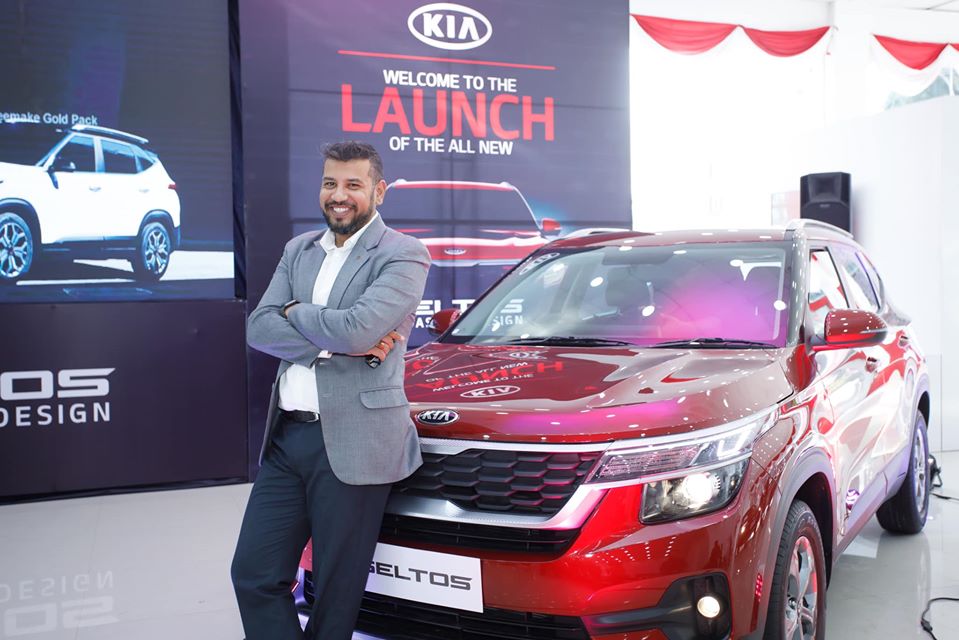
Assistant General Manager, KIA Motors Nepal
This lockdown though anticipated came very suddenly, so we were not able to prepare ourselves as well as we would have liked. We have left what we were doing and went into the lockdown. We do understand and support the government’s decision to lockdown the whole country. However, after all this is over, we need to go back to our respective jobs. So we can use this time to develop relations with our customers and work on our capacity development as professional auto traders.
Once things normalize, our main focus will be our staff and their safety. Our sales and service team will be ready to facilitate all the customers who are facing problems after the long term storage of the vehicle. We will try to deliver all the pending vehicles promptly, and Kia Motor group has extended the warranty period of all of our eligible vehicles.
The impending competition in the auto-industry is inevitable after the lockdown is over as all the auto importers will want to offload their stock as quickly as possible. However, we will have to see how things go as the slow market has affected the industry even before the lockdown. As the largest tax paying industry for the government we really hope the government will come up with a strategy to revive the auto industry in Nepal.
Gyanendra Chand

AGM, Pioneer Motocorp (Datsun and Nissan)
The Nepalese auto industry was already facing a very time tough time even before the COVID - 19 lock down due to unfavourable market situation specially due to the negative prospective of the government towards the industry. It is certain that the near future is more challenging after the lockdown. It will be most necessary that the government take this pandemic very seriously and must change its perspective to the highest revenue generating industry. The government must at least launch some consumer friendly policy for auto buyers like low equity of consumers, best possible interest rates etc. to revive the industry.
Mahesh Kumar M, 
General Manager, United Traders Syndicate (Toyota)
It is very difficult to analyze the market since most countries are severely affected with the COVID-19 pandemic. Nepal is especially vulnerable being a land locked country and we are mainly dependent on import. However, to support our clients in this time of crisis, we are providing emergency services to essential vehicles like ambulance, health-care staffs vehicles, and also diplomats vehicle. This is our core responsibility for now, which is to support the Nation and help fight the crisis.
Hopefully, the auto market will find its footing after 2 months and there won't be too much of a disturbance in the auto sales in the market. We think that the automobile market percentage will gradually increase after the lock down. The situation was even worst at the time of 2015 earthquake and border lock down, during that time we had faced some concerns but we were able to be back on track within a month’s time. In this current situation, Toyota will be back on track promptly. Furthermore, we should be optimistic since Nepal is not struggling as badly as other countries, and the market will possibly see growth within 6 months.
Kiran Acharya, 
Head-Marketing, IME Motors
Everything seems uncertain as of now. This unprecedented crisis will further add to the woes of the auto sector. However, we should look for new ways to embrace this sudden change. This can be done through by introducing an online sales platform where we can create and manage demand through live bookings and introduce a virtual tour of the showroom. Similarly, the service area is another aspect which should be taken care of.
These methods, if implemented, will help the dealers maintain a fair level of business until the lockdown ends. Also, it will help us to strengthen our connection with the customers by providing an extra value.
Maintaining your vehicle during Nepal lockdown
We hope that this article finds you well and in good health. We also hope that you have been following government instructions on keeping you and your family safe. But are you taking similar measures to ensure the safety of your vehicle? As the nationwide lockdown has been extended for the second time, the vehicles in your homes have entered a hibernation phase. You need to take some measures to ensure your vehicle’s safety. Here are some tips.
Parking
Make sure your vehicle is parked in a safe covered area. If you do not have covered parking, then keep your car or motorcycle covered. This will protect it from bird droppings or excessive sunlight that could damage the paint. If you do not have a cover that was supplied by your carmaker, simply use thick bedsheets or clothing for the job.
Do not keep your wipers stuck to the windshield for three weeks even if you clean it regularly. Try to put a wrap under wiper blades to avoid marks on the screen.
Avoid engaging the parking brake/handbrake when you leave the car idle for long as it could get jammed. It’s always better to leave the car in gear or parking mode if your car has that feature. For additional safety, you could also go old school and use wheel chocks, like using a big piece of wood or brick to keep the car from rolling.
If your two-wheeler has a center stand, it will be wise to make use of it when parking. It keeps the fluids in the vehicle at a balanced level and it’s much safer, as you minimize the chances of the vehicle falling and getting damaged.
It is also wise to take some security measures when storing your two-wheelers for a long time. If you have a spoke lock handy, make use of it. Also, don’t leave your vehicle documents, in the vehicle.
Fuel
While you may not be taking your car out daily, keep the fuel tank sufficiently filled for any emergency. This is to avoid a situation whereby you are left high and dry on the road during a lockdown. If there is less fuel, then overtime the air above the fuel could condense, which is not good for your vehicle either. In the long run, it could even cause rusting.
In case you do not have your tanks filled up, no need to go out now. Make sure your fuel tank is checked and cleaned when you head out after the lockdown ends. In addition to keeping the tank full on your motorcycle, also ensure that the chain, springs and cables are lubricated. Check if they need lubrication at least once a week.
Battery
If you try to start your car after a long layover, chances are that the battery will die down. Disconnect your car battery if it is not in use for long. If you don’t know how, you can start the car once every 3-4 days and let it idle for some time, which too will keep your battery from depleting. Just turn on the car, the AC and any other features that run on your car battery to make sure everything is fine. Do check the battery indicator for any hint that your battery needs attention.
Tires
The worst damage you could do to your car during this period is by not moving it enough. The tires could potentially deflate and develop cracks under constant pressure of your vehicle if you leave it in the same position for weeks.
Make sure your tires are properly inflated and are at the correct pressure. When kept idle for a long time the tires could lose air pressure and keeping them inflated help prevent cracking of the sidewalls and flat spots. One option is to move your car a bit every alternate day to ease pressure on the tires.
If you have a driveway at your home, try moving the car on it for a few minutes to give the tires the much-needed roll to stay in shape. Either way, do keep an eye on tire pressure every week. Also, don’t forget to check the spare tire once a while.
Interiors
Lastly, make sure that you thoroughly clean the cabin. Do not leave any junk items in the car that might leave a bad stench and even attract rodents. This will not only help keep your car free of coronavirus but also ready for the first trip you plan when the lockdown is finally over.
Subaru XV: Strong punches
The Subaru XV slots nicely between its medium and large SUV avatars occupied by the Forester and the Outback respectively. Now in its second iteration, the XV is completely new, although it doesn’t look like it. Today we are going to drive it and tell you exactly how it is.
Exterior
Yes, it looks like a hatchback on stilts. It’s longer and wider than before—though no higher. Up front, the XV looks strong. The large hatchback silhouette has a strong stance that emphasizes the adventure feel of the vehicle. You get a decent looking front grille with black cladding all over the car as is the styling norm these days. There are aggressive LED headlamps with sharp looking DRLs. This is accentuated by large tires with 17- or 18-inch wheels, roof rails that look like they can handle heavy weight, and a sloping roofline. All of which give the impression of a highly capable hatchback going on an adventure. Over on the rear, you get LED tail lamps and a chunky rear bumper, and a blacked out roof spoiler with integrated brake lamps complete the look of the XV.
Interior
Inside the Subaru XV, everything feels chunky and satisfying to touch and feel. There are big buttons and switches everywhere from the door inserts, infotainment, and climate control. You get fabric seats with premium finish. The tilt-and-telescoping steering wheel allows for a lot of adjustment, and the driver seat is six-way-adjustable so you will be able to find a sweet driving position quite easily. Visibility is excellent out on the front thanks to a big windshield, small front pillars, and small sectional windows near the windshield. A big rear window and rear quarter-panel windows make for great rear visibility as well.
The steering wheel is nice and solid, encouraging you to drive more. There’s also steering mounted controls for the infotainment system. Speaking of infotainment, you get not one but two screens on the dashboard and that’s when you exclude the small screen on the instrument cluster.
The main screen is a 6.5-inch infotainment unit loaded with Apple CarPlay and Android Auto connectivity, along with a CD player and digital radio while there’s also an 8-inch unit on higher trims. The center screen’s crisp graphics are appealing. The XV’s cabin has plenty of headroom and legroom at the front and a decent amount of room at the back. But those over 6 feet may find the backseat legroom a little cramped. The Subaru XV also comes with a large 310 liter of boot-space. Overall it has an interior worthy of leading its class.
Performance
Under the hood, the Subaru XV is powered by a 2.0-liter boxer four petrol engine mated to a Lineartronic CVT that makes a decent output of 154bhp and 196Nm of peak torque. The car is a bit clumsy to get a move on but will pick up speed once it gets going; highway cruising and overtaking will come easily without a lot of throttle input. The Subaru XV comes equipped with All Wheel Drive (AWD) which may not be noticeable on the tarmac, but makes a lot of difference off-road. Thanks to the power being delivered on all four wheels the XV makes short work of even bad potholes and crummy road surfaces. The steering is light but does offer good feedback and the car gives you a confident ride helped by an AWD system that never makes you doubt the amount of available traction.
Off-roading is where the Subaru XV shines, thanks to the 220mm of ground clearance. Subaru's X-mode in the XV, basically an advanced off-road mode with auto hold and hill descent functionality, is fantastic, and is a rare feature in this class. While the XV does look like a scaled hatchback, make no mistake, this is a serious off-roader.
Verdict
The Subaru XV will not turn many heads on the road, but the bottom line is that it is a solid car. All the elements in the XV are of high quality carefully put together to make this one complete package. It looks great on the outside. The interior, although simple, is one of the best places to be. The engine packs a decent punch on the tarmac, but it is when the tarmac ends the XV is a different animal all-together, giving full-size SUVs a run for their money. All this, in a small, practical, family-friendly package makes the Subaru XV an instant recommendation.
Monsoon-proof your vehicles
Monsoon is coming. Soon the roads all across the country will be drenched with rain, making for a wet, slippery and an annoying ride. While we don’t have any solution to alleviate the annoyance, we do have some tips for you to increase the safety behind the wheel during the downpour.
1. Off water-logged roads
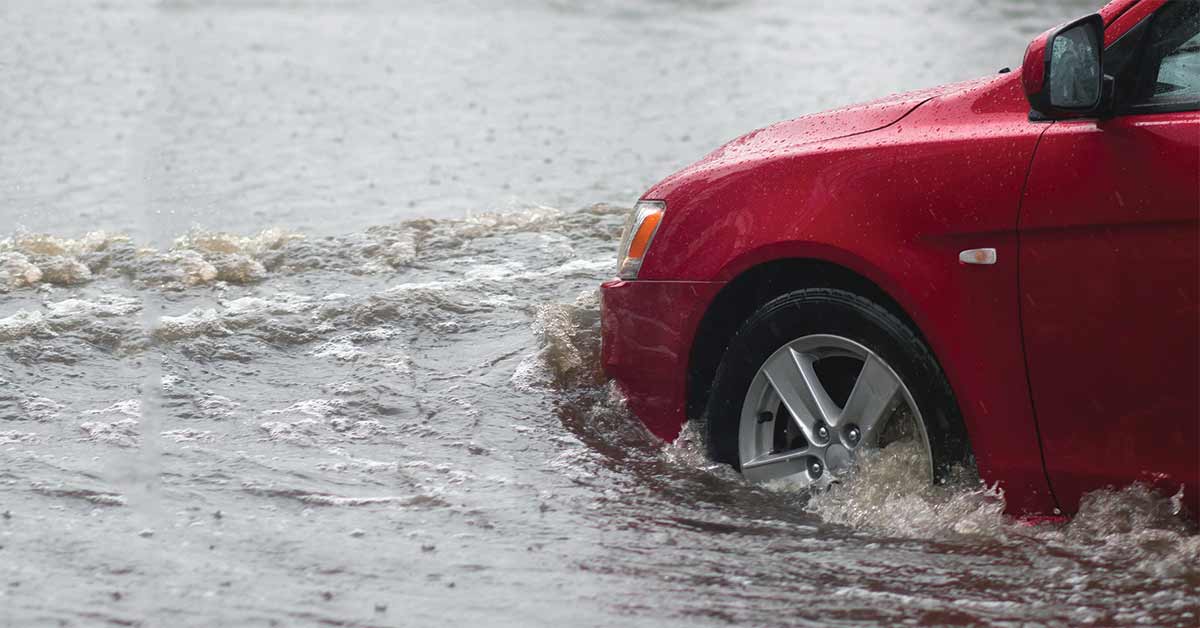
We understand that you are busy, or you might be on your way to an important meeting, or an anniversary dinner. But in the midst of a downpour it is always advisable to stop driving/riding if you’re in an area that is water-logged to avoid unnecessary damage to your vehicle. Don’t make haste because even restarting your vehicle or pushing it in such areas might damage the engine or the electrical system. The worst part is that your standard car insurance or two-wheeler insurance may be insufficient to cover repairs in such cases.
2. Checking your tires
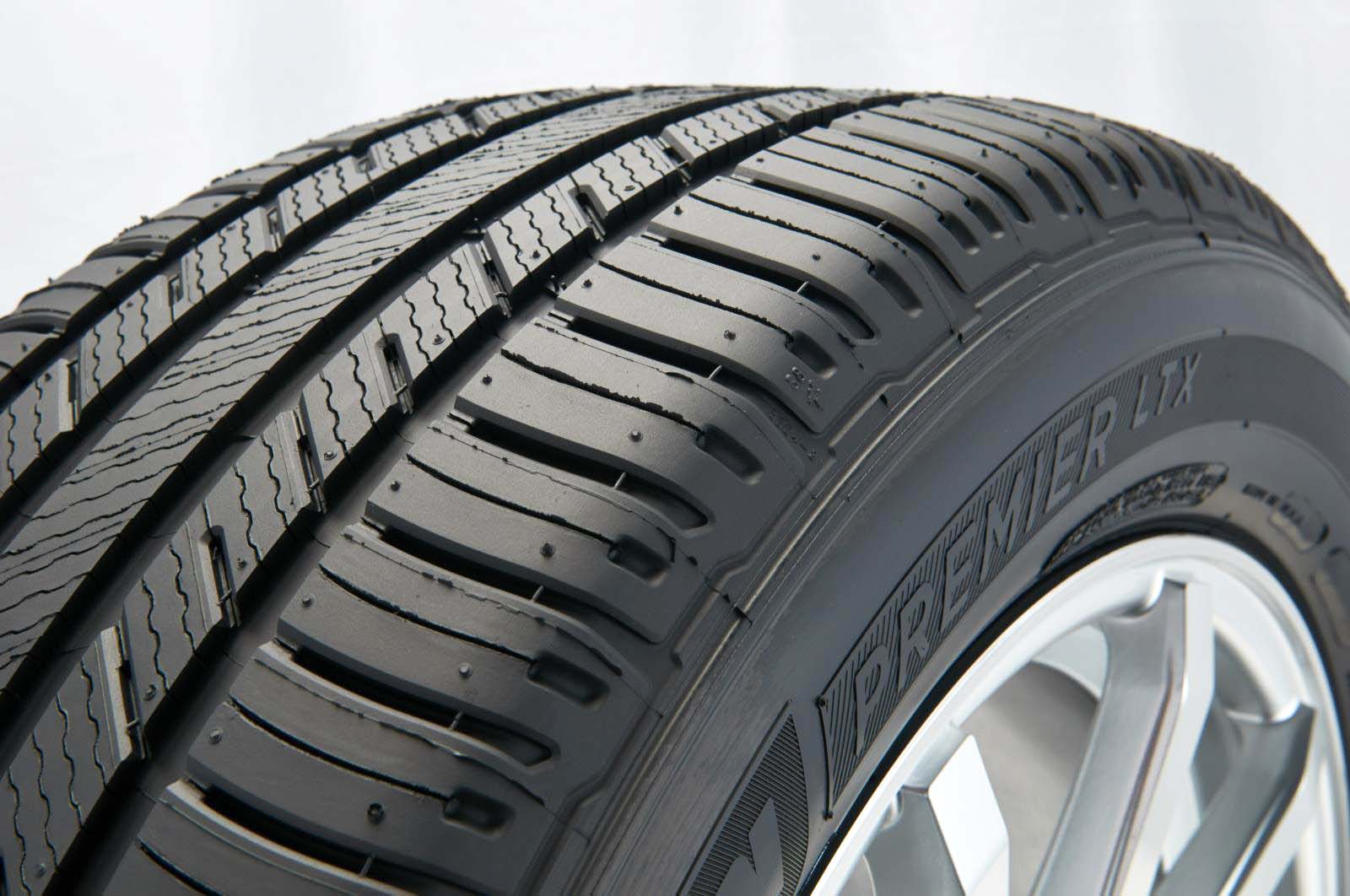
Rain makes the tarmac or any other road wet and slippery, leading to heavily compromised traction, which is made worse by water occasionally mixing with leaked oil and other vehicular fluids. Your tires are your first line of defense. They’re in direct contact with the road, so it’s only fair to check on them before anything else. Tire treads are meant to disperse water; they help in channeling this mix away from the contact surfaces, thereby improving grip so having a good tread depth is critical for the monsoon season. This will give you a good grip on slippery roads, especially on those highways. Today, most tires have tread-wear indicators—a small rubber bar between the grooves on a tire—built into them. As your tire rubber wears down, the tread indicator starts thinning, too. So if the treads are worn out, you should get a new set of tires.
3. Keeping brakes in order
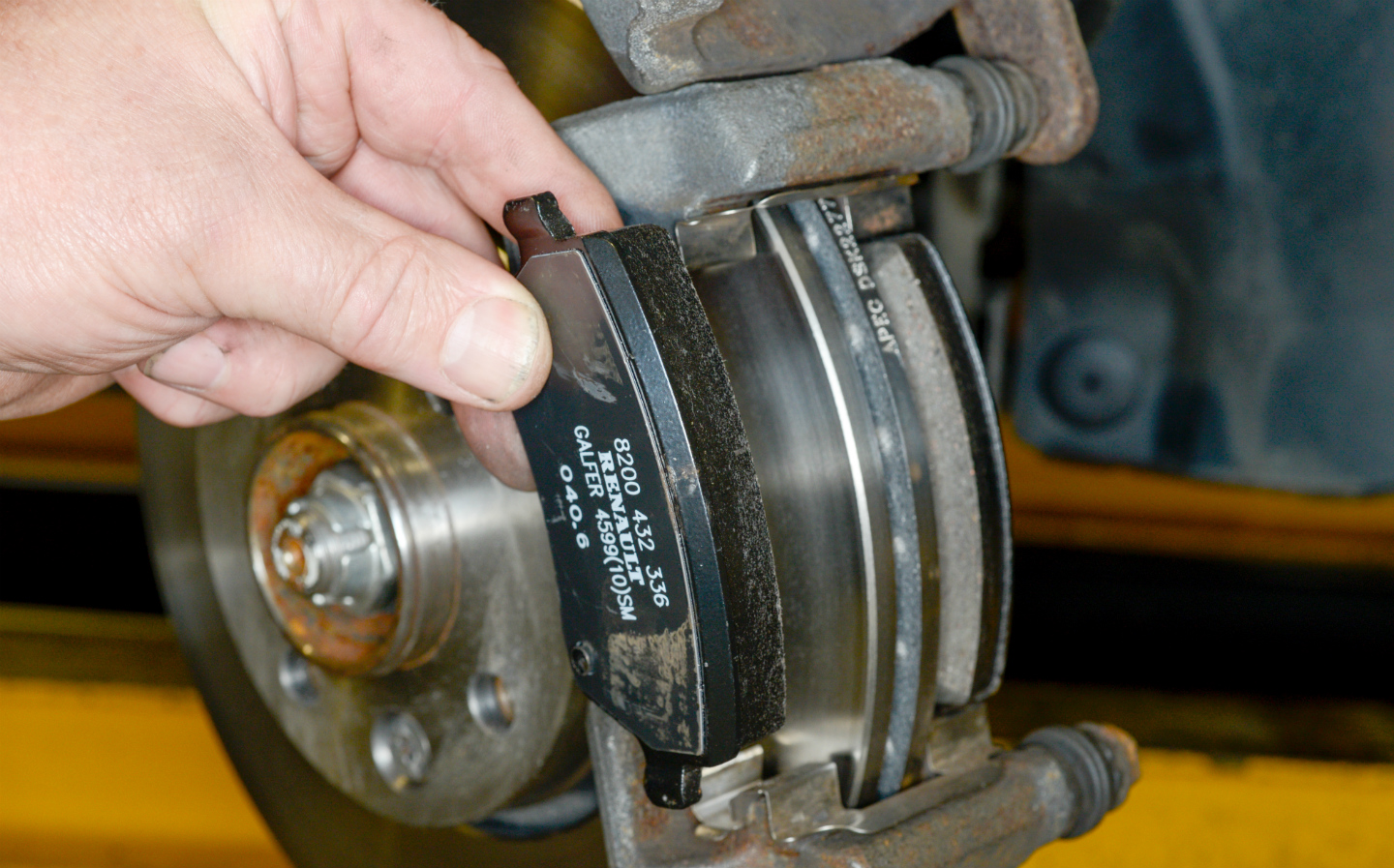
While good tires will help you go along a wet road with great grip, brakes help you stop from running into an accident. Heavy rains mean slippery roads and loss of grip. At times like these, your brakes need to be reliable. Worn out brakes could increase braking distances, and there is also a chance of failure. The brake liners need to be properly lubricated to avoid snapping due to friction. Your brakes have to work twice as hard at the time; so get them checked by qualified personnel. You might end up needing fresh brake pads, discs or a change of brake fluid.
4. Wiping it clean
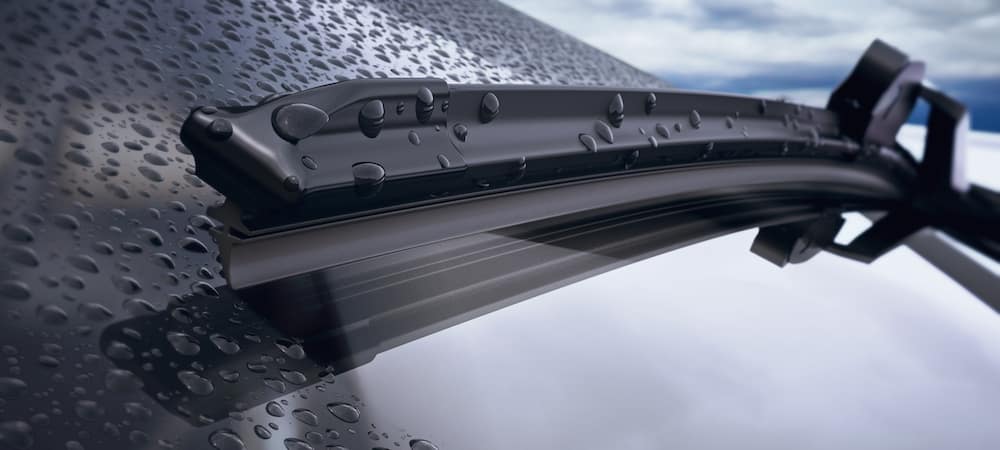
Lack of visibility is one of the main causes of accidents and collisions during the rains. So it is wise to get the wipers changed after every summer to ensure clear visibility during a downpour. If you’re a biker, gift yourself a good helmet with a clear visor. Avoid tinted ones which only work when the sun is out. Check your wiper blades to see if they leave behind any smudges or lines of water on the windscreen. If they leave either, it is time to get them changed.
It is also important to keep the wiper-washer fluids topped up with soap water (or windshield water fluid) as sticky debris can be difficult to clear from the windshield and might also damage it. Make sure to keep an eye on the washer reservoir level and top it up as and when it runs low.
5. Checking rusts and leaks
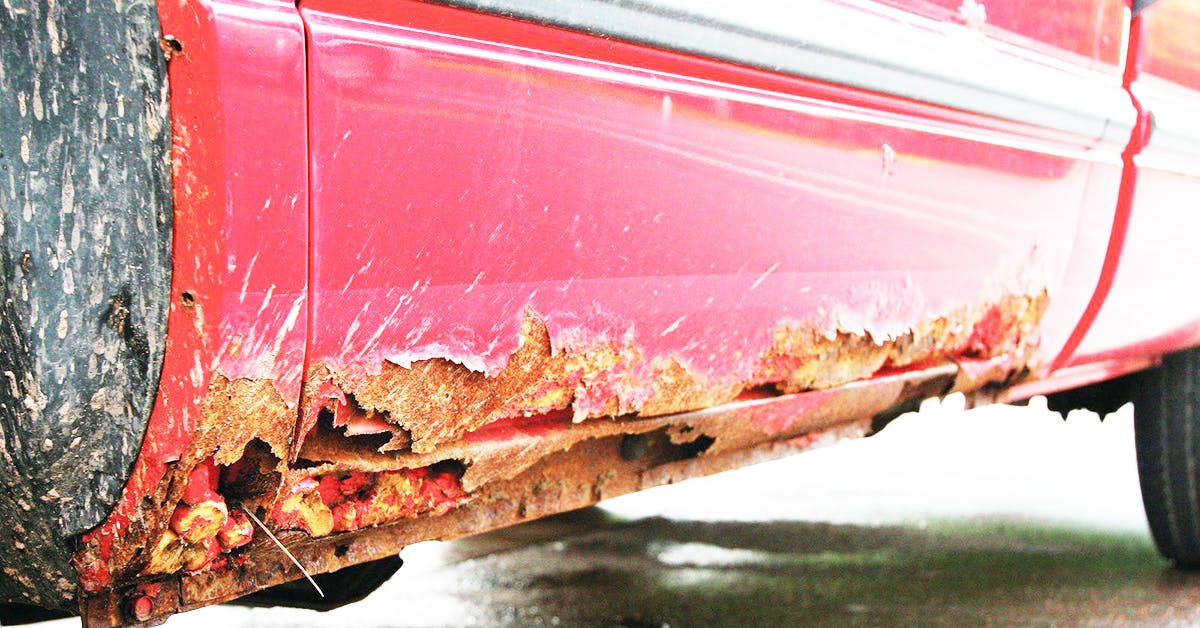
Rain brings moisture which, in general, tends to take a toll on the vehicle. The worst thing in these conditions is to drape your car/bike in a cover. This will only cause the rust to set in sooner. Instead, try stilt parking or park somewhere with decent ventilation. Also, a rather common occurrence is the clogging of drainage holes located around the car that can cause the growth of rust if water accumulates in the area. If there’s rust, it’s best to have the rusted areas treated or replaced before it spreads.
Given the weather conditions, it isn’t uncommon for rubber seals around panels such as sunroofs, windows or windshield to begin to leak over the years. Check around the windows, sunroof, door sills and carpets for signs of moisture, as it will be an indicator of the car having a leak.
6. Wiring and battery
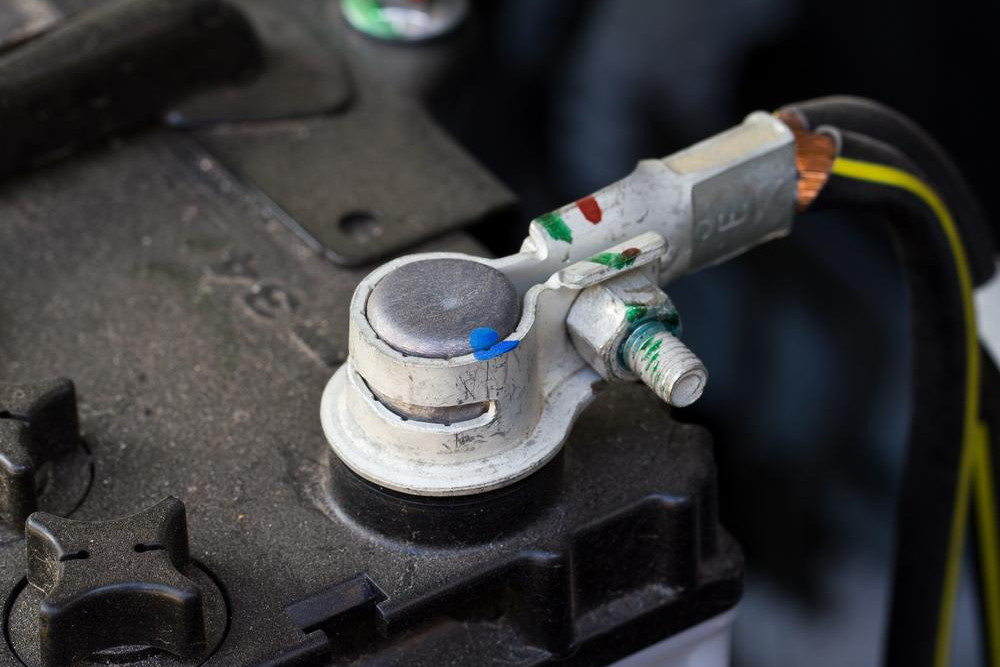
Water and electrics are not the best of friends. You don’t just need to ensure that your car’s electricals are in good working order. You also need to check the condition of exposed wiring running around your car. Improper wiring or those with the insulation peeling off have a good chance of shorting, especially when they come in contact with water, and that can be a safety hazard to you and others as well. It is advisable to make sure your battery is in proper working shape and have it replaced if required, as monsoons generally require heavier use of electrical components such as lights, wipers, etc.
7. Lighting the way
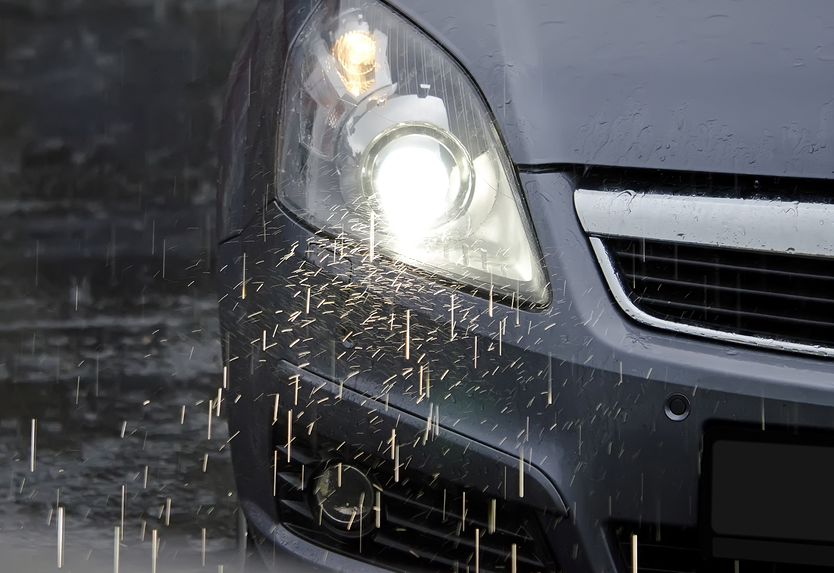
Heavy rains during the monsoon and overcast weather can make for hampered visibility, which is where you require your car lights working properly to be noticeable to other road users. If you’ve noticed your lights get dimmer or inconsistent, you need a new set of bulbs. Flickering or fluctuating lights can also indicate a weak battery. Fixing an uneven beam is as crucial to your safety as it is to the safety of oncoming vehicles. It’s also a good practice to have the headlamp or tail-lamp lenses cleaned if they have gotten fogged up or if moisture has settled inside the units.
Nissan Kicks: First Innings
Known all over the world for its indomitable Patrol and stylish X-Trail, Nissan knows how to make an SUV that appeals to all types of people and will last generations. Yet the compact SUV segment is all but unknown to Nissan. That is now changing. Nissan has finally kicked down the door to the compact SUV market, with this… The Nissan Kicks. A new player from Nissan, the Kicks looks promising on paper and we are here to see if this opener can deliver in its first innings against the segment champs.
EXTERIOR
The Kicks looks different from its competition, trading the generic SUV look for something unconventional but unique and appealing nonetheless. It sits longer and wider than its rival, the Hyundai Creta. But the Kicks is shorter and a bit more tapered at the front, especially in the way the headlamps, bonnet and fog lamps come together. With a roof that slopes downwards and strong character lines on the body that go upwards, the Kicks looks deceivingly short even while it is only 10mm shorter than the Hyundai Creta. This short look also owes its existence to the thick body cladding on the sides and large tires. Out on the back however, things are pretty simple: you have LED tail lamps that partially wrap around the sides, an equally funky oval cut out for the trunk, and scuff plates that houses the reflector.
INTERIOR
As stylish as the exterior is, the interior is equally premium. The black and brown color scheme looks elegant and the choice of materials used to finish the interior is class-leading. This black interior scheme, while it may seem rich, does feel a little too cozy on the inside when paired to the sloping roof, pointing out to the imaginary lack of space.
To make your drive more entertaining and comfortable the Kicks comes with loads of features. Starting with a sporty digital speedometer that reminds you of the Renault Captur and the 8 inch floating touch screen infotainment which has become the norm in the automotive industry these days. The infotainment system is a breeze to use and comes with Android Auto and Apple Car Play. While automatic air conditioning seems too common, the Kicks makes it available as standard on every variant.
PERFORMANCE
The Nissan Kicks is powered by a choice of two oil burners. These are the same set of engines you get in the Renault Captur. There is a 1.5-liter petrol mated to a 5-speed manual transmission that makes 105 horses and 142 Nm of torque. The other engine on offer is a 1.5 liter diesel mated to a 6-speed manual transmission that makes 110 horses and a peak torque of 240 Nm. We drove the diesel and we believe that you should get it instead of the petrol. The Kicks doesn’t feel punchy like a diesel engine should. It rather picks up speed in a linear fashion and doesn’t feel exhausted and out of breath even in triple digits.
While the SUV does make the peak torque at 1,750 rpms, you will find yourself usually shifting down a gear while picking up speed quickly or overtaking on the highways. Shoot it past 2,200 rpms and you will be able to have some fun behind the wheel. The diesel variant also comes with an ECO mode that will further dull the throttle to save a few kilometers; we only recommend you turn on the ECO mode if you are short of cash.
While the Kicks may look sporty on the outside, the drive is tuned for maximum comfort. The suspension easily soaks any small or big undulations at both low and high speeds. The Kicks comes with ABS with EBD and Brake Assist, Hill Start Assist and four airbags. The 360-degree parking assist is one of the highlights and is exclusive to the Kicks in the compact SUV and crossover space.
VERDICT
The Kicks is a completely new player in the compact SUV segment, and as new players go, it comes with its own sets of hits and misses. While the Kicks lacks the punchy drive and comes with a cabin that’s too cozy, it does hit some important balls right out of the stadium: it looks uniquely stylish, and the interior is elegant and one of the best in the class.
It comes with features that are missing in cars above its class like the 360 degree parking cameras, and it drives like an expensive executive sedan soaking up everything the road has to offer whilst cuddling the passengers with comfort and silence. After a day-long drive we can say that the Nissan Kicks has got what it takes to go toe to toe against anyone in the segment.
2019 Suzuki WagonR launched in India
Suzuki Wagon R has scaled the unique feat of over 2 million cumulative customers till December 2018. Launched in 1999, the Wagon R has cemented its position as one of the best vehicles Maruti has on offer. Now, the much awaited new Suzuki Wagon R has been launched. Priced between INR 4.19 lakh and INR 5.69 lakh, the all-new Wagon R is available with two engine options and seven variants.The all-new Wagon R now comes with a tall-boy design, a wider stance, and spacious interiors with best-in-its class boot space. It is powered by the advanced K-series engine offering high fuel efficiency. The car also with a new 1.2 L engine option that delivers a powerful performance coupled with great fuel economy.
Customers will also have the choice of 1.0 L engine for the all-new WagonR. Maruti Suzuki’s two-pedal technology will also be offered in the new Wagon R. The Auto Gear Shift (AGS) offers hassle-free drive in stop-go traffic with no compromise on fuel efficiency.
On the inside, the new Wagon R offers SmartPlay Studio infotainment experience, apart from playing music, this infotainment unit also lets you surf news, get latest updates on weather and locate eateries around. On the safety front, the new Wagon R has been developed on the 5th Generation HEARTECT platform, which makes the car stable, strong and safe.
Safety features including driver airbag, ABS (Antilock Braking System) with EBD (Electronic Brakeforce Distribution) and front seat belts reminder, speed alert system and rear parking sensors are standard across variants.
Do you know your ‘torque’ and ‘horsepower’?
A discussion that dates back to the dawn of the very first combustion engine. Torque and horsepower are what an engine produces when you turn the key and press the accelerator. Air and fuel ignited in the glorious chambers of combustion causing the crankshaft, transmission, and drive axles to do their dance. This is the miracle of energy conversion: the potential energy contained in a liter of recycled dinosaur remains efficiently changed into a means of propulsion. However, many people don’t understand what horsepower and torque really mean, let alone how they affects the performance of the vehicle. While every review we do contains these words, we’ve never really gone into explaining what they are and what they do. Well, that changes today. Let’s start with torque. Torque is basically twisting an object. If you have ever used a torque wrench, you can relate to this. If the handle on your wrench is one foot long, and you place one pound of pressure on the end of the wrench, you have exerted one ft-lb of torque on the shaft. In vehicles, the engines rotate around an axis, thus creating torque.
Horsepower, on the other hand, is the power produced by an engine. In physics, power is the rate at which a work is done. In cars, horsepower translates into raw speed. While the two are independent entities everywhere else, but when inside an engine both horsepower and torque affect a car’s overall speed, so you can see why people mix them up.
So, which should you have more of in your vehicle—horsepower or torque? It all depends on what vehicle you are talking about. For instance, the greater the horsepower an engine produces, the higher the torque potential. “Potential” here means how the torque is programmed to behave in your car. This explains why a race car and a tractor that have the same amount of horsepower can vary so drastically. In a race car, all the torque is used for speed through the gearing, whereas in the tractor it is used to convert the horsepower into pushing and pulling extremely heavy weights.
While we are on the topic of heavy weights, let us first focus on heavy vehicles so that we can cancel them out and move onto cars. The heavy vehicles, say, light pick-up trucks, heavy commercial trucks and loaders and also excavators and bulldozers which are used to haul heavy loads from one point to another need high amount of torque; and diesel engines are the kings when it comes to torque. While these heavy vehicles have less horsepower than your everyday sedan, they have high amounts of torque peaking at a much lower rpm than the sedan.
For instance a pick-up truck may have 170 horsepower but 400 lb-ft of torque at say 1,800 rpms, and a sedan may have 250 horsepower and 200 lb-ft of torque at say 5,000 rpms. While the pick-up truck may not reach high speeds it will certainly be able to carry heavy payload up an incline with ease because it has tons of torque at low rev range. The truck will roll along uphill in the first gear with all the weight on its back without breaking a sweat, while the sedan will need to reach a much higher rev range to even attempt the climb. This is why high low end torque diesel engines are used in heavy commercial vehicles.
On the flipside, cars have their peak torque much higher up the rev range. To help you understand horsepower and torque better in cars here is a simple example.
Let’s take three cars of identical size, shape, and weight, being driven on an identical track with identical conditions. Car One generates 200 hp and 400 lb-ft. of torque; Car Two has 300 hp and 200 lb-ft. of torque; and Car Three has 400 hp and 250 lb-ft. of torque. The engines of each of the three cars generate power along the same power-band—so, let’s say that they’ll redline at 7,000 rpm, with peak power at 4,000-6,000 rpm, and they’ll all be shifted by a robot driver who shifts at the identical rpm on all three vehicles, assuming all are identically-geared.
Now let’s take these three cars on three different races. First being a 0-60 kph run, second a 400 meter run and third a run on absolute top speed. Car One would win the first race, as it has the highest torque which equals to maximum pulling power; it would be the quickest off the line. Car Three would win the third race as it has the highest horsepower which equals more speed, and Car Three would be a balance of One and Two.
In other words, more pulling power comes from engines that achieve peak torque at low rpm, but more sporty performance is found in those with high-revving, high-horsepower engines that have peak torque at mid to high rpm. It has been said that horsepower makes you go fast, but torque is the power that presses you back in your seat as you leave the start line.
Hyundai Ioniq: The future is here
The Indian government in 2016 announced its rather ambitious project to have an all-electric vehicle fleet by 2030. Even for a country like ours, where the Prime Minister has promised us our own ships and trains even as the prime entry route into the valley is in a state of shambles, the idea of India going all-electric felt a little farfetched. We were able to find a little respite after India set a more realistic target of 30 percent e-cars by 2030. Nevertheless, the ultimate electric era seems eminent. So, does that mean us average income earners are headed for a boring automotive future?
This has been a nagging quandary that has been in the back of our heads, and it was not very different when we headed out to test-drive the newly introduced, all-electric Hyundai Ioniq. For probably the first time, ever, we were not in as positive of a mindset as we’d like to be. With the odds stacked against it, the Hyundai Ioniq had a grand task at hand.
Exterior
Considering the futuristic nature of an electric vehicle, the Hyundai Ioniq is not as modern as you’d expect, which is a surprise because Hyundai have been bold with their styling ever since the introduction of their fluidic design language. The Ioniq does not scream its hi-tech electric caliber; instead it blends with the crowd of fossil fuel propelled vehicles.
The Ioniq has a lot of generic body lines that work well to give it a subtle stylistic design. HID lights with LED light flank the full blacked out grille. The headlight unit is also equipped with Dynamic Bending Light, which moves the HID headlights when you turn the steering so that you can see through dark corners better. The sloping nose and rounded off rear end help to make the Ioniq more aerodynamic. You will notice the back has a split rear window and angular wraparound taillights.
We had the Ioniq in black noir pearl, but we think the ceramic white color scheme looks much better.
Interior
The exterior might not blow you away, but the interiors will surely have you smiling from ear to ear. It’s not a cabin that overwhelms you with a plethora of fancy thingamajigs, although it has plenty of those. On the contrary, the dash is cleanly laid out with materials that feel good to touch. According to Hyundai, the company incorporated sugarcane fiber as 25 percent of raw materials in the door trim panels, as well as recycled plastic “combined with powdered wood and volcanic stone,” which reduced the weight of “some interior plastics” by up to 20 percent, so there’s a bit of an eco-side to the interior trim.
On the gearshift panel you get your driving controls, where you can put the car into drive, park, reverse or in neutral at a push of a button. There are buttons that let you heat the front seats or cool them down, you get a switch for the electronic parking brakes and more buttons to let you choose the driving modes and to switch on auto hold mode. You can even drop your phone into the wireless charging bay on the Ioniq where it will wirelessly charge your phone (if the phone has that feature).
The front seats are spacious and we can definitely see ourselves comfortably munching miles with the Ioniq. The front passengers also get power adjustable seats.
Performance
Complete silence is what you are greeted with when you’re driving the Hyundai Ioniq, and for people new to electric cars, this is the first thing you’ll notice.
On paper, the electric motor of the Hyundai Ioniq makes 118 BHP, a decent number for the Nepali market. But what really impresses are the combination of the 218 lb ft of torque with the almost nonexistent pause between gear changes.
You get to choose from an option of economy, normal and sport mode. As you might have guessed, we were mostly driving in sports mode. This did affect the range by a smidgen, but switch to sport mode and stamp on the accelerator with wicked intent and the Ioniq bolts forward like a football being kicked. This means that the driving experience is surreal when you’re gunning it through straights. However, with a low center of gravity, thanks to its battery position, and a low curb weight, the Ioniq feels extremely lively. The steering is light but retains a certain degree of feel to it so that the person behind the wheels enjoys the time there.
For the Ioniq Electric, with its 28.0 kWh lithium-polymer battery pack, a full charge on a Level 2 charger is said to take about 4 hours and 25 minutes, while a 100 kW charger could deliver an 80 percent charge in about 23 minutes, and a 50 kW charger could deliver an 80 percent charge in about half an hour. You will not have much ‘range anxiety’ that electric car owners are susceptible to because the Ioniq has a claimed range of 280kms on a full charge. Even when you switch to sport mode and really floor it, you will still have enough juice to get around the city for the entire day. Depending on where you’re headed, you might have to be more judicial with your driving if you decide to take it out of the city though.
Verdict
Let’s put aside the actual possibility of an all-electric future for the automobile industry; let’s assume it IS going to happen somewhere along the line. But can we see a future where we will not be griping about the lack of performance vehicles for the common folks?
Thanks to the Hyundai Ioniq, we can. The Ioniq is not just a tree-hugging environmentalist. Yes, it is an electric car that goes above and beyond in its endeavor to help save the planet but it is not a boring dud when it gets to the tarmac. It might not be a mad machine but it packs enough silent grunt to be considered a fun car to drive. It isn’t a silent creep incapable of exciting even the most mellow of the auto enthusiasts. To the contrary, it is a car that encourages the possibilities of an all-electric future for automobiles where you can realistically dream of buying a fun EV. And we desperately needed this ray of hope to help keep us sane.














